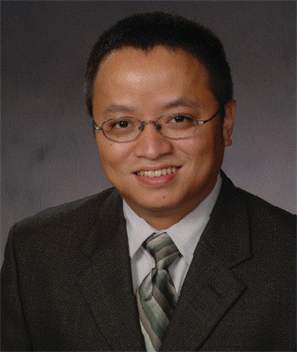Dr. Lin Shao, an associate professor in the Department of Nuclear Engineering at Texas A&M University, has been awarded $1.2 million in funding by the U.S. Department of Energy as a part of an initiative to promote projects with potential in the fields of nuclear energy research and infrastructure enhancement. The three projects, which Shao will either lead himself or serve as a collaborator, are through an integrated program combing the Nuclear Energy University Program (NEUP), the Nuclear Energy Enabling Technologies (NEET) and Integrated Research Project (IRP).
Shao’s first $800,000 grant will be applied to a Texas A&M-led NEET project titled “Advanced Surface Plasma Nitriding for Development of Corrosion Resistant and Accident Tolerant Fuel Cladding.” His team will design an advanced plasma nitriding device to convert the surface of fuel cladding into a thin nitride film for better performance under extreme conditions. Different from traditional plasma nitriding techniques, the new technique is able to uniformly nitride fuel cladding tube surfaces with significantly reduced edge effects, reducing spacing issues. The team will test the treated materials under harsh irradiation conditions and off-normal steam conditions to evaluate the structural integrity of the materials.

Shao’s second grant, totaling $200,000, will contribute to a collaborative IRP project led by Dr. Mujid Kazmi at the Massachusetts Institute of Technology. The team will develop accident tolerant fuel though a combination of modeling, material synthesis and testing. The Texas A&M research team will focus on ion accelerator irradiation of candidate nuclear fuel/cladding materials in addition to contributing to atomic scale modeling.
In addition, Shao will receive another grant totaling $225,000 through a collaborative NEET project led by Dr. Michael Nastasi at University of Nebraska-Lincoln. The project is focused on developing nontraditional composite materials made by combining metals and amorphous ceramics. Projects involving amorphous ceramics, which do not have a clearly defined shape or form, are ideal for the future development reactor applications and design since they are able to remain formless under the stresses of irradiation and heating.
“Radiation materials science has become more and more important in nuclear energy research due to the desperate need to develop radiation tolerant materials for better and safer reactors,” Shao said. “Studies these days require atomic scale modeling, atomic scale characterization and atomic scale design, and we are lucky to have second-to-none facility and program on campus to meet these challenges.” Shao said.